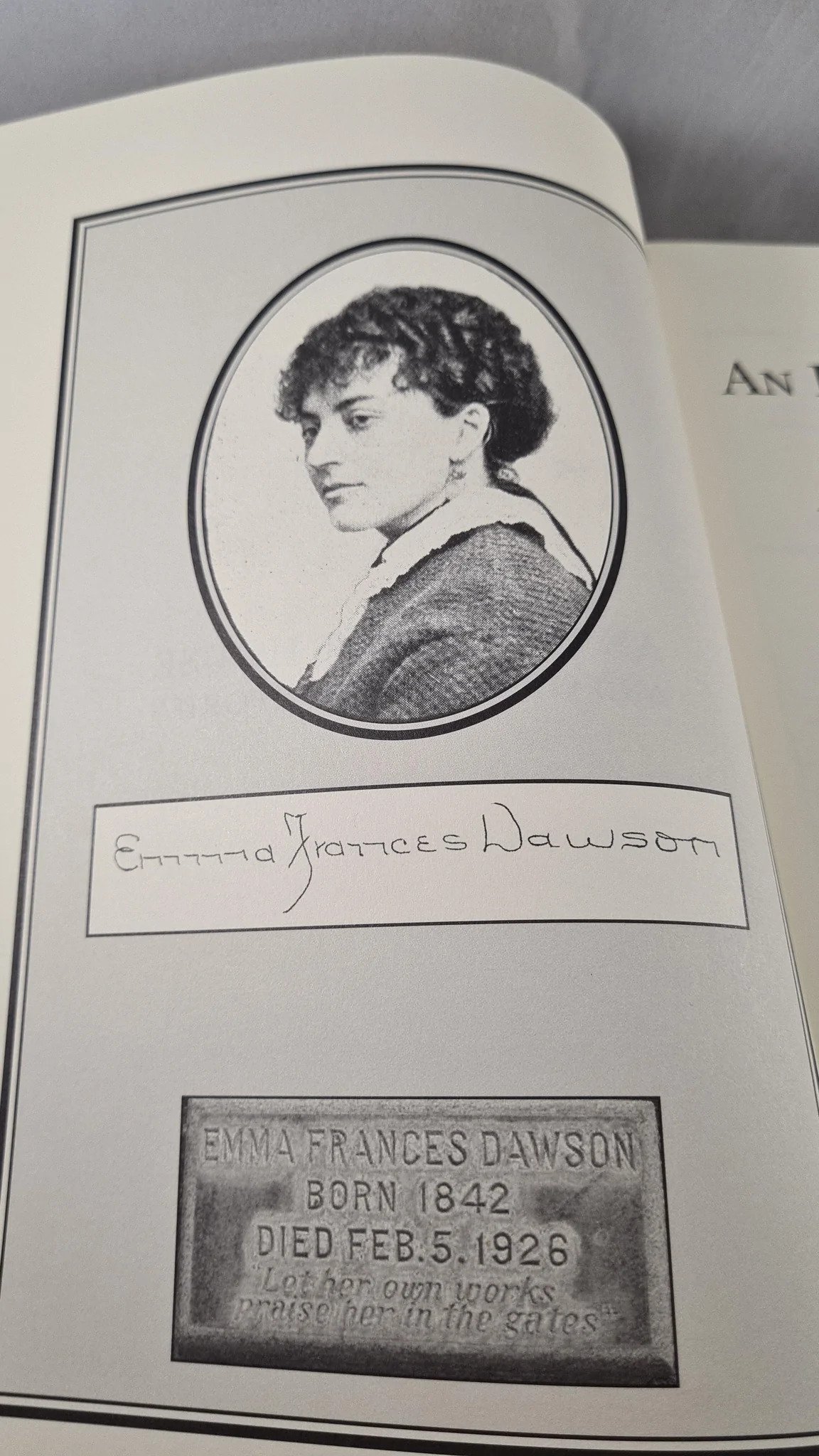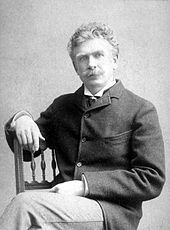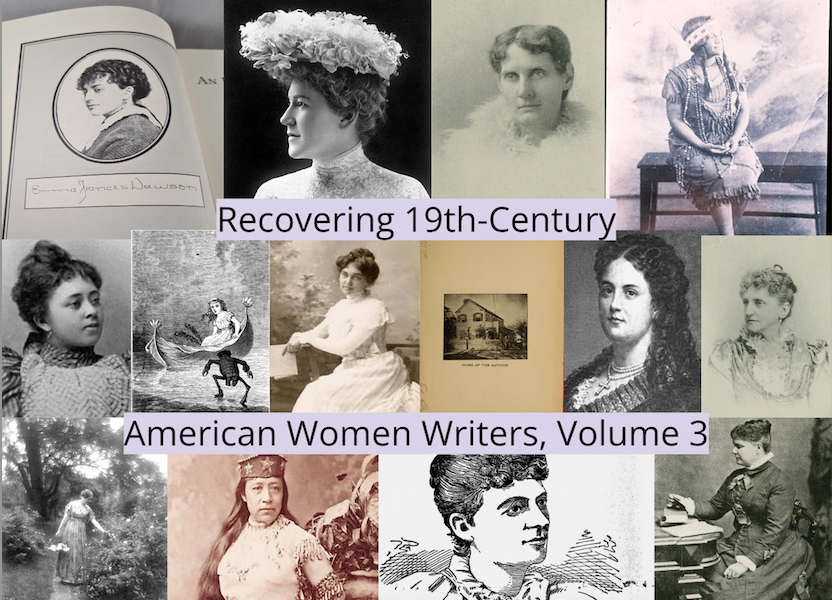
“A new friendship is like a new string to your guitar – you are not sure what its tone may prove, nor how soon it may break.”
An Itinerant House, Emma Frances Dawson
Introduction
Emma Frances Dawson was an author during the 19th century whose catalogue was nearly forgotten. She wrote a great number of Gothic stories which were periodically published in local newspapers in San Francisco, where she became a prominent celebrity. Despite her fame, most of her work was nearly lost. Thankfully, her work was compiled into a large book named An Itinerant House, and Other Stories which was able to preserve her legacy. The stories featured within hold some of the earliest known instances of a woman writing in the vein of horror and the macabre.
Biography
Emma Frances Dawson was originally born in New England, in 1839, making her an American author. She was born to John Dawson, a railroad worker, and Salome ‘Lola’ Dawson. Her parents divorced and remarried quickly after their marriage and Dawson’s conception. After Dawson’s parents fully separated and remarried ”Emma had relocated to the West Coast [with her mother], about as far from their birthplaces as they could go while remaining in the United States” (Terence E. Hanley). This decision landed them in San Francisco, California. While there, her mother fell fatally ill, which prompted Dawson to begin teaching music as well as writing. “She also …translated works from Latin, Greek, French, German, Spanish, and Catalan” (Terence E. Hanley). Her earliest story that can be traced was “The Dramatic in My Destiny”, which was published in The Californian in 1880. All of this to say that Dawson was extremely well educated, and that she had found in San Francisco a new home and muse.
Dawson herself was quite reclusive, having an extremely small group of close friends as well as having an absurdly poor life. She rarely invited people over to her home, or even left it in general. With the little bit of information regarding Dawson’s personal relationships, it appears that she was very close literary friends with Ambrose Bierce, who was quoted as saying “She [Dawson] is head and shoulders above any writer on this coast with whose work I am acquainted.” Bierce himself was a very highly regarded American reporter and journalist who wrote for many of the same papers that Dawson did, with particular emphasis on The Argonaut and The Californian. He was a contemporary author in Dawson’s time who was greatly appreciated for his satire as well as his very strict and honest critical analysis of literature.

One of Dawson’s most notable relationships was with William Doxey, who started a news outlet in San Francisco in the 1880s, where he began The Lark magazine. Emma Frances Dawson was his primary source for literature; they mutually benefited from each other, rising in fame. This wouldn’t last for long, as Doxey’s business was soon to go bankrupt. Before he lost the ability, he would collect and publish Emma Frances Dawson’s literature in a massive book he called An Itinerant House, and Other Stories. Doxey was able to preserve almost everything that Dawson had ever published. Eventually, Doxey was taken by illness and financial struggles, which caused the people of San Francisco to come together and attempt to fund his betterment. Doxey died in 1916 at age 72. In relation to Dawson, Doxey’s appearance was one of many publishers who helped her gain fame in San Francisco. He began publishing her work very early on, and without him, the world may never have had any documentation or proof of Dawson’s work.

Dawson was almost always on the verge of bankruptcy despite the fame she had within the West Coast, as evident via a newspaper outlet, The Evening Sentinel, which published her poem ‘Old Glory’: “Emma Frances Dawson, the author of the following poem, is now a resident of San Francisco, and so poor that she could not pay her rent last week till the recipient of $50 at the hands of Mayor Phelan” (J. G. Tanner, The Evening Sentinel). Financially, very few authors were able to make writing their predominant source of income. Edgar Allen Poe (one of her contemporaries and to whom she was often compared) was able to make a living solely as a writer, however he too, was very unstable, which assists in explicating the reason as to why Emma Frances Dawson was so incredibly poor and relied on her goodwill and reputation.
Emma Frances Dawson continued to live and write in San Francisco for another fifty years, before her untimely death in 1926. Dawson had supposedly had a stroke while in her home, left to starve to death. Her neighbors were the reason anyone had found out she had been dead, as they noticed no movement, no sounds, and no sign of Dawson for days. The people of San Francisco came together, where Helen Throop Purdy stated “She possessed an imagination and a style that were rare, her tales often rivalling [sic] Poe’s in eeriness.” (Helen Throop Purdy).
The private life of Dawson was as such, yet ironically her lifestyle was very public. She gave everything she had to the city of San Francisco. She was an incredibly well-versed, highly educated woman who had the love of an entire city, and influence over much of the West Coast. It is an absolute shame that such an individual’s literary legacy was almost entirely left to dust.
An Itinerant House, and Other Stories
This is the only book that she had published, and as it stands, the only current way to view her work (outside of archived newspapers). The book is a collection of horror stories she had been commissioned to write or are wholly original, written specifically for the book. Featured inside are a collection of 10 stories, with some notable mentions being “An Itinerant House,” “A Stray Reveler,” and “In Silver Upon Purple.” In order to gauge interest in her work, a brief introductory summary of these will be provided.
“An Itinerant House”: A young Mexican maid kills herself after her employer is revealed to have a wife. Her friends attempt to resurrect her, to which they find success. However, the living world causes her pain and anguish, leading her to damn and curse her former friends as well as the house she died in…
“A Stray Reveler”: A widow is mourning her husband’s death, and given consolation by her friend, who questions the widow about the circumstances of the husband’s death. As the widow reveals details about herself and her husband, the friend notices peculiar artistic pieces scattered about the room, given to the widow before the husband’s immediate death…
“In Silver Upon Purple”: A nobleman walks through a graveyard, holding a basket of flowers, mournful of his soon-to-be wife dying. However, he is not alone, someone is watching him as he begins to leave. Shadows dance around the gothic gargoyles which guard the tombs…
It is STRONGLY recommended that you view the book for yourself. A link to a free, online version may be found below.
Is It Worth Recovery?
When it comes to the question ‘Is Emma Frances Dawson worth recovering?’ the answer must be ‘Yes’. As defined by our definition of Literary Recovery, which states “The revival of forgotten, lost, and suppressed literary works by authors who have previously gone under-researched, under-recognized, or even completely undiscovered,” Frances Emma Dawson falls under the purview of a ‘forgotten author’ who had also been under-researched as well as under-recognized. It is because of these reasons that Dawson should be recovered on basic principle.
In regards to her text, would it be worth recovery had it not been written by Dawson? The answer is not as clear… An Itinerant House and Other Stories was written during the Victorian Era, which featured the Gothic as a core theme in many books, which knocks its individuality down. However, the way in which it presented the Gothic left many stories with bad endings for the characters. Recovery of the book would be beneficial for a more social reason, as the book contains dated references to San Francisco in every instance, which can be used to understand how the city functioned during the 19th Century. It is for a multitude of reasons that the answer of recovery may not be properly defined, yet it must be said that as her sole piece of modern literature, it must be recovered.
Link to the Text
Link to the book: https://archive.org/details/anitineranthouse00dawsrich/mode/2up?view=theater
